Handicraft is the “traditional” main sector of the crafts, it’s a type of work where useful and decorative are made completely by hand or by using only simple tools. Sri lanka has proud heritage of art and craft skill that is almost found amongst women. In sri lanka popular handicrafts include gold and silver jewelry, wooden mask, lace work, pottery, wood carving, met work, brass work, lacquer work, bathik and ceramics.
Sri Lanka has a large verity of traditional handy crafts. Sri Lanka is known world over for her handicrafts. Sri Lanka has a varied heritage for of traditional crafts and arts. These products are a result of age – old techniques, indigenous raw materials and tools of natural Handicrafts are fashioned in rural Craft Centers. It was with in these Castes that traditional skills were preserved with a high degree of distinct ethnic identity, Sri Lanka handy crafts men have been able to success fully combines certain raw material in to modern Crafts. Sri Lanka is well renowned to produce exquisite handicrafts.
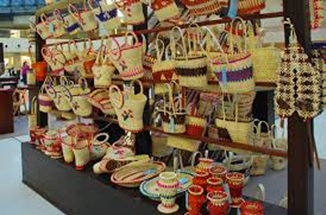
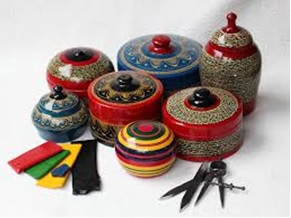
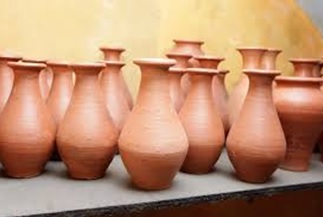
Jewelry has always been embedded into the culture and heritage of Sri Lanka. Sri Lanka’s Jewelry is of superior craftsmanship that competes on the international level bringing in foreign revenue into the country. Sri Lanka has two traditions in designing jewelry: Galle Low Country Traditional also called Western Traditional and Kandyan traditional. The Galle tradition features gold and precious stones while the Kandyan tradition features intricate metal work especially in silver. Sri Lanka, famed for precious and semi-precious stones, especially blue sapphires, is a sure choice when it comes to purchasing jewelry.
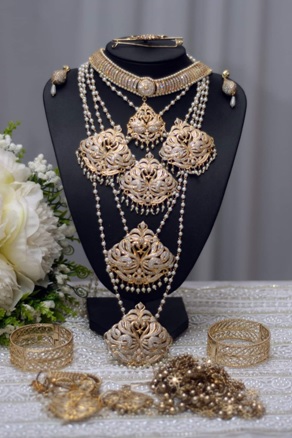
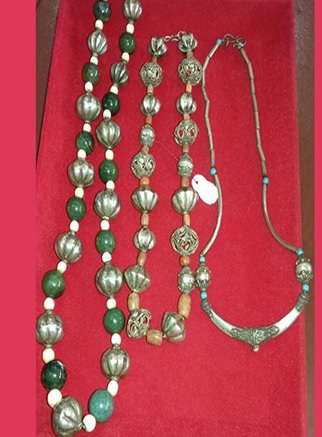
Masks are deeply connected to Sri Lankan folk-lore and takes on a functional role where they’re used in healing rites and rituals. it’s popularly as devil dances, some are dance-drama performances that tells a full story and is enacted by dancers and actors wearing these masks.
One of the popular and ancient acts is that the 18 Sanni that are thought to represent diseases or ailments caused by yakkas (devils). Eighteen masks carved to represent the torment felt through these decreases are worn by an exorcist and a tovil, devil dance, is performed. Other popular mask dances or dramas are Kolam and Raksha, one a comedic performance and also the other masks mainly used in festivals and processions.
Wooden Masks are produced mainly within the South western coastal belt of Sri Lanka. Of all the areas of the South-western coastal belt, the town of Ambalangoda includes an extended heritage within the specialized handicraft of producing Wooden Masks. Wooden Masks during an honest selection of sizes in vibrant colors are made from the timber of a tree locally called ‘Kaduru” (strychnos nux vomica). Kaduru tree that grows in marshy lands bordering paddy fields is light and soft making it an ideal material to means out wooden masks.
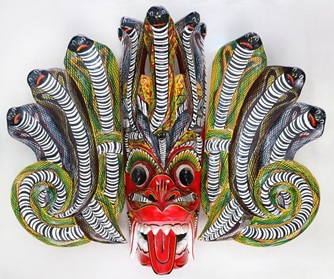
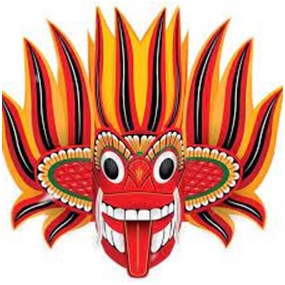
Lace making, a pastime caught on from Portuguese and Dutch women during the colonial times, has now developed into a reputed household industry, mostly around the South Western Coast of Sri Lanka. Lace making households can be seen in Weligama, Galle, Matara and Hambantota. And it is indeed quite fascinating to see how the hands dexterously handle the tools to create intricate patterns, something that you should not miss if you happen to come across a household engaged in the art of making beeralu lace and perhaps even have a go at it, if they allow.
The process of making the Beeralu is fascinating but takes a lot of time and effort. First, the pattern of the lace is hand-drawn on chart paper, marked with round skulls, and wrapped around a lace pillow. Afterward, several lengths of thread are wound around wooden bobbins, and last, of all, the threads are braided or woven around the pins, which ultimately form into a finished piece of lace.
During this process, the Beeralu lace pieces are shaped. As the craft continues, the weaver spins a small pillow (pillow ball) and gathers lace strips around it. The number of drums used for weaving varies according to the pattern, and the yarn used for weaving can be white or colored or a mixture of both. Beeralu lace is often made up of long strips that combine to create various items such as table mats, shirt collars, coasters, and blouses. Direct weaving of these items will take a long time.
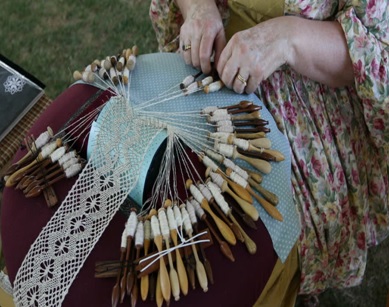
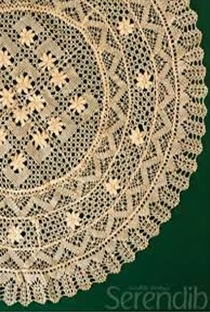
Laksha industry has special place in Sri Lankan Sinhala culture. They use natural materials for this progress. although the things that comes out from the Laksha insect is colourless, they add various colours and make them colourful. The difference between a good quality Laksha and a low quality Laksha is that low quality one is breakable, it is broken by bending it from a hand. Laksha industry are often divided into two parts as Niyapothu wada and pattal wada, but both of those industries have fallen down nowadays.
As the new generation is searching for latest jobs and also the Laksha products are sold in high prices by salesmen, the demand of Laksha industry is reduced. The second we hear the word Laksha we happen to imagine old complex designs, but nowadays the new generation of the society seems to stick with charm, creative designs. which effects the Laksha industry also
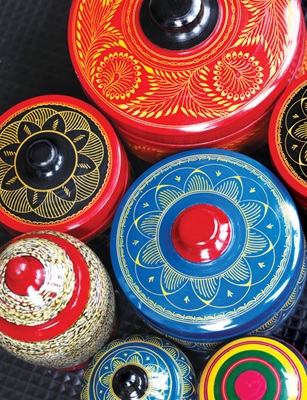
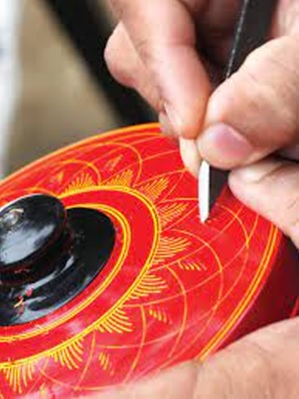
Pottery is one of the oldest handicrafts in Sri Lanka. The primarily utilitarian character of Sri Lankan pottery has been continuing to exist since the very beginning of Aryan Sinhalese civilization of Sri Lanka. The simplicity of ornamentation and charm of the elegance of pottery have held fast in the island for more than a couple of millenniums and a half in Sri Lanka.
Low fired cooking pots, cooking pans, jugs, bowls, goblets, tiles, vases, are the most widely used kitchen utensils of Sri Lanka. In addition to the kitchen pots and pans, intricately designed products such as terracotta figures and carved vases too are popular in Sri Lanka. Ornaments such as figurines and delightful animals with distinctly Sinhalese characteristics are also produced at the pottery workshops in the countryside.
Sri Lanka pottery is turned out by means of a small wheel being turned by the potter while shaping the lump of clay with hands and then oven-hardened in a traditional kiln built of brick. The major quantity of the products is plain utensils devoid of decoration. With the demand for decorated pottery being on the rise, dying the wet clay in patterns and glazing are now introduced.
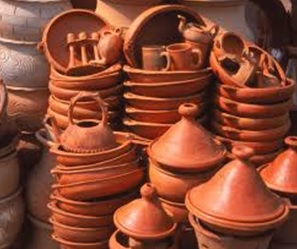
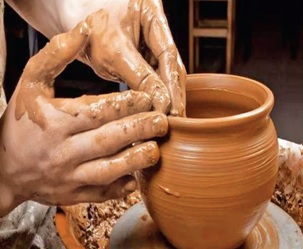
Batik is both an art and a craft, which is becoming ever more popular and standard among contemporary artists everywhere within the world, as a wonderfully creative medium. to form a batik, selected areas of the design are blocked out by applying hot wax over them, a dye is applied on top and also the parts covered in wax resist the dye and remain the first colour. a simple batik could even be just one layer of wax and one dye, but this process of waxing and dyeing are often repeated again and again if necessary, to make more elaborate and colorful designs. After the final dyeing the wax is removed (usually in hot water) and therefore the material is ready for wearing or displaying.
Batik is of Indonesian roots, yet in Sri Lanka, the craft has developed into a singular style to provide shirts, sarongs, dresses, shorts, wall hangings, cushions cover, bed hangers and a mess of décor items. Batik handicraft products are of distinctive designs in vibrant colors.
Today, since chemical dyes too have got the equation additionally to the traditional dyes, the spectrum of colors in Batik seems to possess become endless. Originally an industry, today manufacture of Batik products is completed at workshop level within the South-western coastal areas of also because the Central area of Sri Lanka.
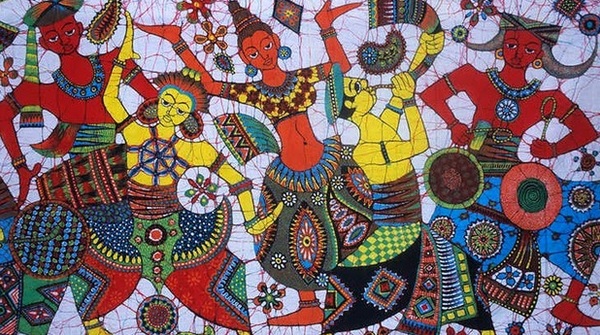
“Pedura”, is a multi-purpose Sri Lankan mat, that has been in use since the traditional ages. In the past, almost every Sri Lankan home want to have several of those mats for various purposes. Once it’s a tuckaway bed, next a surface to dry paddy, spices and other dried foods, sometimes, a dining table and the mat when placed on the verandah, serves as seats in old Sri Lankan village mud houses. The raw materials or fabrics used for this traditional mat are the kinds of pan reed that’s freely available within the river and lake banks. The raw pan reeds are first boiled in natural dyes to begin the method. And only then does the art start. Two dried pan reeds of the same length are vertically placed together, running parallel to each other within the manner of a rail track, then a 3rd is brought into the frame and placed horizontally to tie up the two. The continuation of this interlacing process will finally result in a colorful handcrafted mat.
The modern Mat weaving craftsmen in Sri Lanka, to remain up with contemporary requirements, have introduced innovations in producing cushion covers, hand bags, shopping bags, letter holders, fans, screens etc. For centuries, Dumbara valley of the Kandy district has been famous for its production of mats with Distinctive design and colour schemes.
